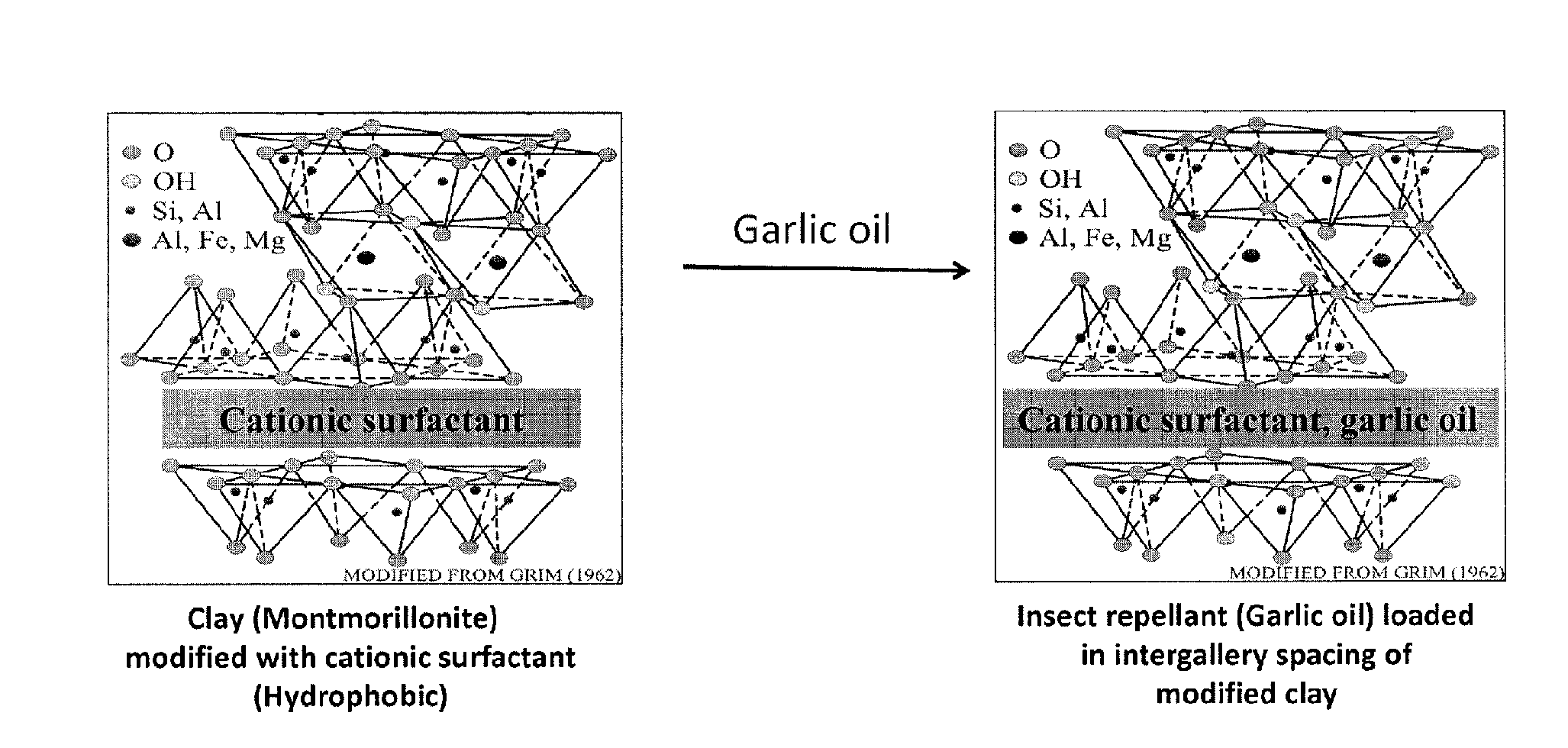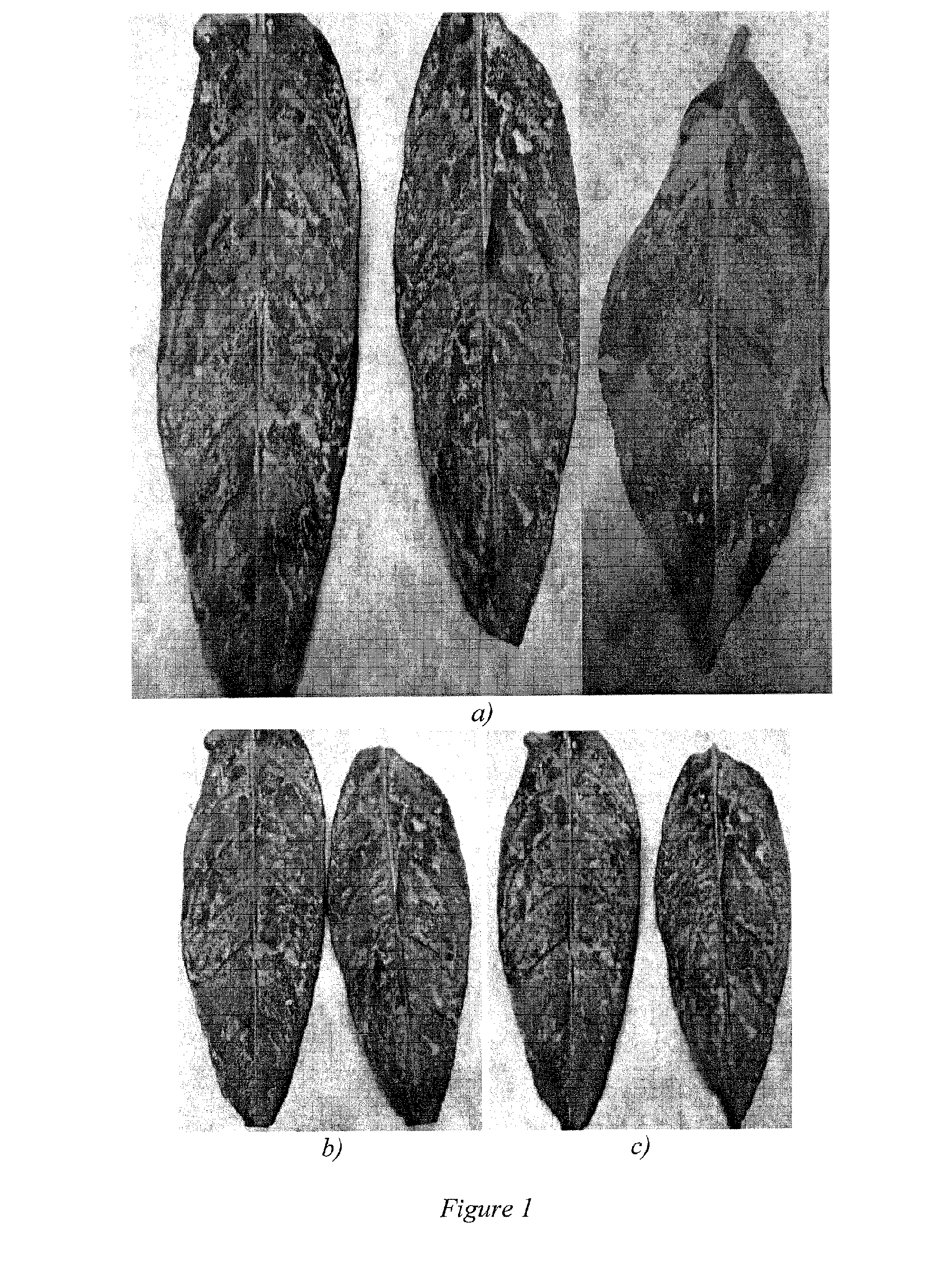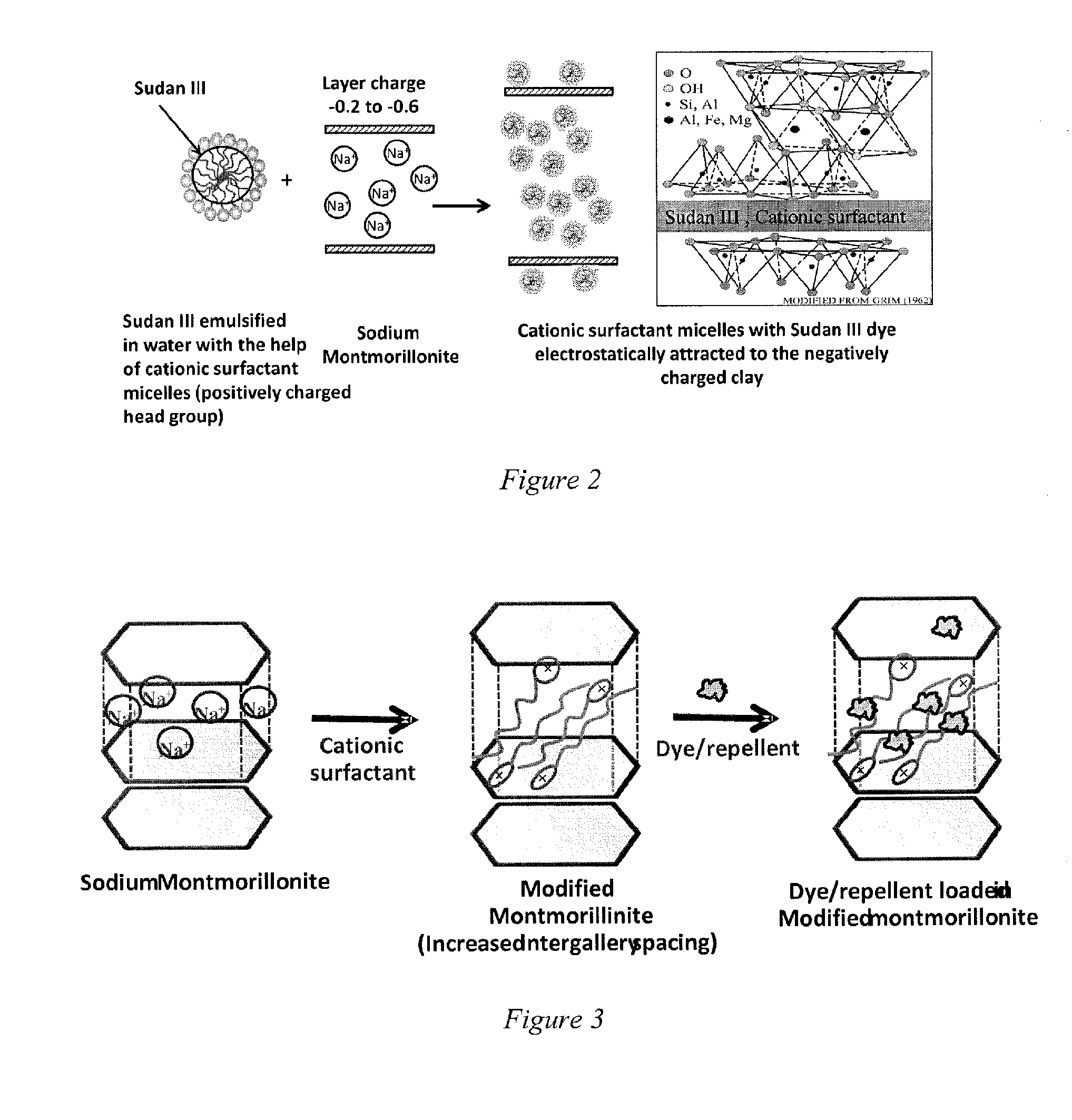Engineered particulate systems for controlled release of pesticides and repellants
a technology of pesticides and parts, applied in the field of engineered parts of pesticides and repellents, can solve the problems of acp/hlb infestation, pears seriously affecting the food industry, and current disease management methods that have failed to stop, and can be partially successful in slowing
- Summary
- Abstract
- Description
- Claims
- Application Information
AI Technical Summary
Benefits of technology
Problems solved by technology
Method used
Image
Examples
Embodiment Construction
[0034]Embodiments of the invention are directed to nanoengineered particulate coatings (NPCs) comprising clay particles that act as a host for impregnation with a guest that can be released as a volatile in the presence of air, or leached into a liquid when the NPCs are dispersed in the liquid. In an embodiment of the invention, the NPC's guest is an insect repellent. The NPCs can be dispersed on a plant to allow the guest to be slowly released over an extended effective duration to prevent attack on emerging gaps during the growth of the plant. In these exemplary embodiments of the invention directed to release of agricultural agent over a period during which a plant grows, NPCs are hydrophobic in character, which allows adequate coating of leaves that withstand weather fluctuations. In addition to insect repellants, the NPCs can be combined with other treatment options, such as systemic application of insecticides, to effectively manage agricultural diseases. NPCs allow slow relea...
PUM
 Login to View More
Login to View More Abstract
Description
Claims
Application Information
 Login to View More
Login to View More - R&D
- Intellectual Property
- Life Sciences
- Materials
- Tech Scout
- Unparalleled Data Quality
- Higher Quality Content
- 60% Fewer Hallucinations
Browse by: Latest US Patents, China's latest patents, Technical Efficacy Thesaurus, Application Domain, Technology Topic, Popular Technical Reports.
© 2025 PatSnap. All rights reserved.Legal|Privacy policy|Modern Slavery Act Transparency Statement|Sitemap|About US| Contact US: help@patsnap.com



